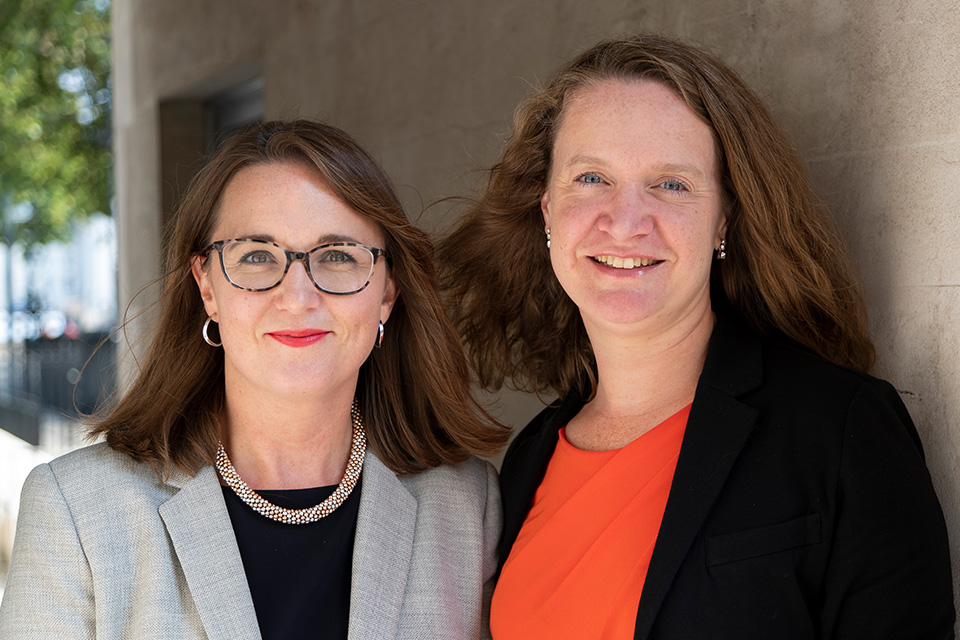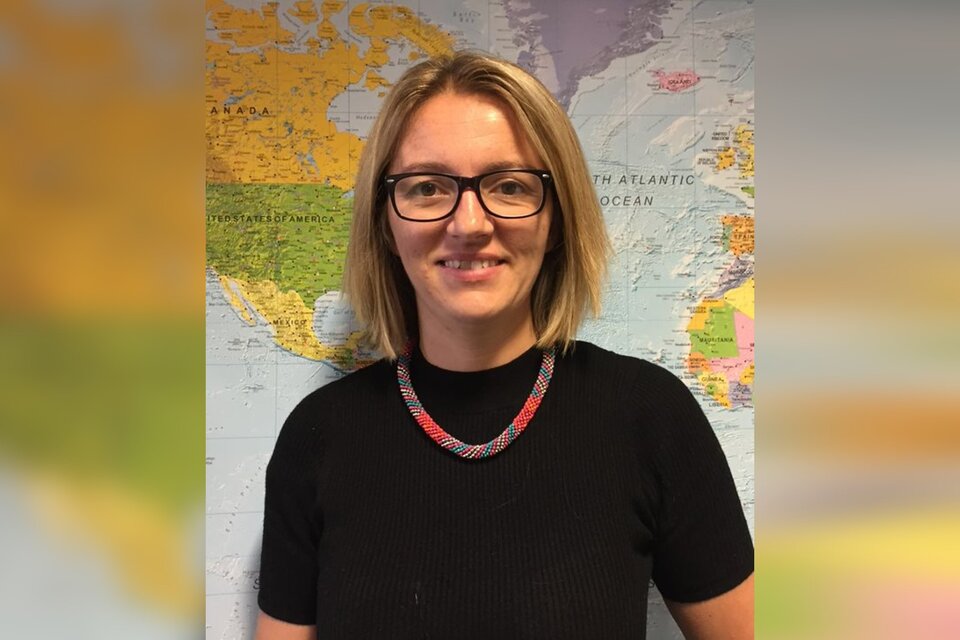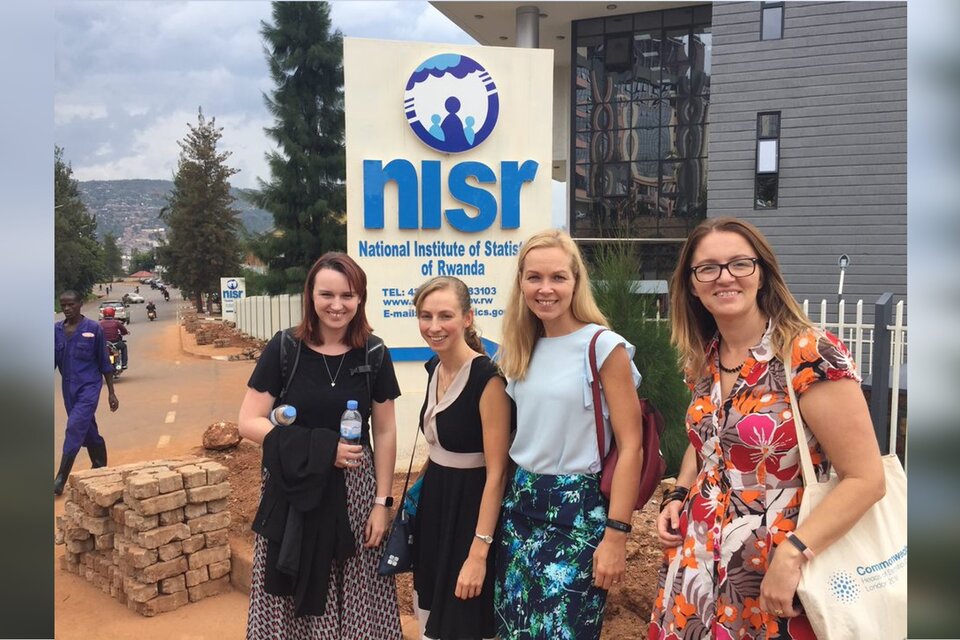Part two: Five things you didn't know about...
Our second selection of posts from across the Analysis Function, each sharing five facts about a topic or project

As part of Analysis in Government month, this is the second in our series of ‘Five things you didn’t know about…’ blog posts. Analysis in government is being used more than ever in policy, decision making and the media, this series of blog posts will share, showcase and celebrate the vast variety of professions and work within the Analysis Function.
Jump to one of our posts:
- Five things you didn’t know about coding in analysis and research
- Five things you didn’t know about the Government Economic Service
- Five things you didn’t know about Diversity and Inclusion in the Analysis Function
- Five things you didn’t know about how the UK is helping modernise official statistics in the developing world
- Five things you didn’t know about data quality
- Five things you didn’t know about how the Government Geography Profession supports diversity in the geography pipeline
- Five things you didn’t know about working as an Operational Delivery Professional (ODP) in a Statistical Organisation
Five things you didn’t know about coding in analysis and research

By Daniel Shiloh and Jacob Cole, Office for National Statistics
In the autumn of 2020 over 1000 government analysts responded to the coding in analysis and research survey (CARS). We were interested in how they use code and how much they knew about using software engineering practices to improve quality and efficiency in their analysis.
Below are some things we’ve learned so far. Keep in mind: our sample is not necessarily representative and is likely to over-represent people interested in coding.
1. People’s coding skills get better with practice
The more people use code in their work, the more their skills improve. Our findings also show that people who don’t code in their work often feel they are losing their skills. Hardly surprising!
But the degree is large: 74% of analysts who never use code in their work reported that their coding abilities are now slightly or significantly worse than before. In comparison, 93% of analysts who use code all the time in their work reported their coding abilities are slightly or significantly better than before.
2. Most analysts first learn to code in education or at work
Our findings show that although many people are joining the public sector with coding capability, many others are learning on the job.
Across all Civil Service grades, the most common way people first learned to code is in education (48%). This is followed by learning while in public sector employment (32%).
This varies widely between degree subjects. Analysts with degrees in computer science, statistics and engineering subjects are most likely to have learned to code in education (69%, 62% and 60%, respectively). The least likely to learn to code in education were analysts with psychology (35%), humanities (41%) economics (43%) or geography degrees (44%).
3. Some professions use code more than others
People in different professions use code differently.
The most frequent coders are data scientists and operational researchers (73% and 65% use code regularly or more, respectively). In contrast, the least frequent coders are economists (22%) and social researchers (39%). This could be explained by different professions drawing from different degree subjects.
4. Different professions prefer different programming languages
While R and SQL are the most popular programming languages in our sample, we found differences in the languages that are used between the different professions.
The most popular programming languages among statisticians and operational researchers were R (67% and 80%, respectively) and SQL (62% and 71%). Economists were the only profession to know Stata more than any other language (55%), followed by R (49%). Government social researchers were much more likely to know SPSS than any other profession (72%). More data scientists know how to use SQL than any other profession (84%), with python and R also commonly known (74% and 73% respectively). While many digital, data and technology professionals also know how to use SQL, python and R (82%, 67% and 54%), they also know Visual Basic for Applications (VBA) more than any other profession (59%).
5. A lot of people haven’t heard of RAP, but those who have see it as important
Although most of our respondents had heard of reproducible analytical pipelines (RAP), 37% still haven’t. RAP is the use of some software engineering practices in analysis. Out of those who have heard of it, 70% agree or strongly agree that RAP is important in their work and only 10% disagree or strongly disagree.
It’s great to see that so many people are enthused about the benefits of RAP. However, our team still has more work to do in promoting and supporting coding and RAP. Our findings have shown us how important it is for people to get time to practice coding, and that the tools analysts use and how often they code varies across the analysis function.
We support analysts across government to use coding in their work. Contact us to find out how we could help you goodpracticeteam@statistics.gov.uk.
Five things you didn’t know about the Government Economic Service

By Polly Rees (left) and Nikolai Maslak (right)
The Government Economic Service (GES) is the profession for economists within the Civil Service. Here are five things that you may (or may not know) about the GES:
1. We have some history as an organisation
The GES began as a formal Civil Service profession in 1964, with a professional membership of around 25 members. However, we can trace the influence of economics in the Civil Service to at least the very early 20th Century, through the work of individuals such as JM Keynes, William Beveridge, Sir Hubert Llewellyn Smith, Sir Ralph George Hawtrey, and even trace our lineage back further to the 19th Century through the work of Sir Robert Giffen.
2. We have grown a bit since then……..
In the nearly 60 years since the GES was formally established we have steadily grown in size, reflecting the growing impact and importance of economists to the work of the Civil Service over that period. As at January 2021 there are around 3,000 members of the Government Economic Service.
3. We can be found in many parts of the UK Civil Service
GES economists operate across the whole width of government, with GES Members currently in over 50 different Departments, Agencies, Devolved Governments and other parts of the UK Civil Service. Our members are supporting those organisations to deliver on their responsibilities, and more broadly are supporting the government to deliver on their policy priorities and tackle the issues of the day,
4. It’s a high standard to get in and a lot of work to assure
We recruit hundreds of economists every year, with the central Government Economic and Social Research (GESR) Team organising and overseeing thousands of interviews and professional standard assessments as part of our recruitment process. This is all overseen by our excellent GESR Operations Team, who lead on all our central GES recruitment delivery across all the GES recruitment pathways (Fast Stream, Main Stream, GES Degree Level Apprenticeship, and Summer Student Placement Scheme).
5.We’ve been pretty busy
GES members are on the frontline of helping to deliver on the government’s priorities, supporting ministers to deal with the issues of the day. Among other things, our members have used economics to inform the delivery of Brexit, the macroeconomic response to coronavirus (COVID-19), review our Green Book investment guidance, and to support the planning and delivery of Net Zero.
For more information on the Government Economic Service:
- Government Economic Service on GOV.UK
- Government Economic Service on Instagram
- Government Economic Service on Twitter
- Government Economic Service on LinkedIn
Five things you didn’t know about diversity and inclusion in the Analysis Function

By Sophie Ingram (left) and Louise Skelton (right), job-share Director of Finance and Programmes (Ministry of Defence) and Analysis Function Senior Sponsors for diversity and inclusion
In February the Analysis Function (AF) published its Diversity and Inclusion (D&I) Strategy 2021-2024, which outlines the Function we want to create and the actions we will take to achieve this. By placing equality and inclusion at the heart of the AF’s priorities, we will garner great benefits that differences in outlook, experience and approach bring to our organisations, and enable the analysis we produce to be of even greater value to UK society.
The Strategy is truly a cross-function approach that relies on support, ownership and understanding from all AF members. Keep reading to find out how you can get involved and help us to create genuine change.
1. We have an annual D&I survey
The AF’s annual survey is an opportunity sample survey, and last year 1,820 analysts responded from a variety of government organisations and professions. We collect information across a range of personal characteristics and related sentiment-based topics, which we can triangulate with other data sources (such as the Civil Service People Survey) to better understand representation and analysts’ experiences.
Read more about the 2020 survey findings in our D&I Strategy.
2. Our approach is evidence-based and will continue to adapt
The D&I survey and subsequent consultation sessions were the starting point for defining an evidence-based approach to the Strategy. By considering findings alongside existing profession and departmental activity, we identified core areas where a function focus can really add value, including:
- increasing representation of women and ethnic minority analysts at senior grades
- prioritising social mobility initiatives
- advocating for increased transparency in decision-making and broadening diversity in our governance structures
- understanding recruitment and promotion biases
This strategy is the AF’s starting point. Our approach will remain iterative as we continue to develop further interventions by assessing evidence and user need through ongoing engagement, and by measuring the effectiveness of our actions.
3. We will attract a diverse range of candidates to posts
The Strategy’s approach is based on an ‘ABC’ delivery framework to support initiatives that will make a real difference to both existing and future government analysts.
We will attract diverse talent by driving forward initiatives to break down barriers to attraction, retention and progression in the function. We must develop a better understanding of whether there are any differences in success rates for applicants from groups that are currently under-represented across the AF and, if so, at what stages of the recruitment process. Members of our D&I working group are currently analysing cross-function data, which will support us in developing a more informed approach to outreach and recruitment.
4. We will support staff to build their expertise and talent
We will Build expertise and talent of analysts within the AF through formal development and wider networking opportunities. You may have already attended one of the function’s ‘Leaders in Analysis’ sessions. These events are an opportunity to hear about Senior Civil Servant’s careers and experiences within government. Sophie joined Leaders in Analysis for International Women’s Day in March and spoke about being a working parent and our experience of job sharing. It was great to respond to so many questions from the audience about the opportunities that flexible working can bring to your career.
Email analysis.function@ons.gov.uk to sign up for the AF’s monthly newsletter and be the first to hear about future events and opportunities!
5. We will create an inclusive culture for all
We will create an inclusive culture for all by promoting and championing diverse role models and best practice across the AF. In each monthly edition of the AF newsletter, our working group shares others’ experiences to demonstrate how and why we can, and must, strive to create inclusive and diverse teams. Email analysis.function@ons.gov.uk to subscribe.
Catch up with Catherine Bean’s blog. Catherine is autistic and discusses her workplace experience and how we can all support neurodivergent colleagues to succeed in their careers.
In January we introduced a Shadow Board for the AF People Board (AFPB), with a varied membership across professions and departments. The Shadow Board is quickly increasing its engagement across the AF to represent the voices of more analysts in its discussions and recommendations to AFPB. If you have suggestions you would like to share we’d like to hear them, email the team at analysis.function@ons.gov.uk.
All three ‘ABC’ strands are actively supported by a working group. If you’d like to get involved, please email analysis.function@ons.gov.uk for more information.
Five things you didn’t know about how the UK is helping modernise official statistics in the developing world

By Emily Poskett, Office for National Statistics
1. The Office for National Statistics (ONS) has partnerships supporting statistical modernisation in National Statistical Offices (NSOs) in Africa
Each is a true peer-to-peer partnership, working together in order to facilitate genuine change. We have prioritised countries with which the UK government, led by the Foreign Commonwealth and Development Office (FCDO) has a strong relationship, and where the NSO themselves has the necessary drive to modernise.
These collaborative relationships are looked after by the ONS’s International Development Team (IDT).
Our partnership with the Ghana Statistical Service (another Government Statistical Service!) is showcased in this short video. Some of the main achievements of this partnership include improving the geospatial quality and coverage for their upcoming Census; improving public policy analysis to support national development and evidence-based decision-making in Ghana; and professionalising communications at the Ghana Statistical Service (GSS).
2. A further partnership with the UN Economic Commission for Africa (UNECA) enables us to have an even wider reach
Our partnership with the UNECA Africa Centre for Statistics enables the lessons we have learned to have wider reach across the continent.
ONS has run and fed into UNECA workshops, provided direct and joint technical advice, and been able to link up partners to impact on the quality of censuses across Africa as part of the 2020 census round, ensuring that African NSOs get maximum benefit from digital data collection.
3. The ONS Data Science Campus has a hub dedicated to international development work
The Data Science Hub is part of the ONS Data Science Campus – but based within the Foreign, Commonwealth and Development Office (FCDO). It was launched in 2019 to use data science and new data sources to support international development. The hub has three areas of focus:
- Building tools to deliver data to decision makers. Examples include using machine learning and satellite imagery to estimate the numbers of cattle in South Sudan, where traditional agricultural surveys are difficult to complete; and using information from ship transponders to measure visits of vessels to ports in East Africa to provide indicators of port efficiency and proxies for economic activity.
- Delivering data science training. This ranges from advocating for the use of data science to senior policy makers, to building capacity in techniques such as natural language processing, machine learning or geospatial analysis. The hub also provides training in R and Python coding.
- Mentoring analysts in developing countries or in development organisations. The hub identifies and supports analysts, for example in African statistics offices, who want to deliver data science projects. Hub data scientists work alongside them providing advice and support, for example to automate statistical processes (trade statistics in Rwanda, economic statistics in Kenya, consumer price indices in Ghana) and using geospatial analysis and satellite imagery to improve the measurement of agriculture in Rwanda.
4. The UK is increasing transparency of data on the Sustainable Development Goals (SDGs) around the world
ONS co-develops Open SDG, an open source, free-to-reuse multilingual tool for collecting and reporting disaggregated SDG data.
We also support developing countries to set up their own data websites using Open SDG. Globally the tool is being used by at least 22 countries, regions and cities, with 11 of these countries being eligible for overseas development assistance.
5. Your expertise can help! This work is a fantastic opportunity to stretch yourself and learn
The IDT has 19 exciting posts based in the UK and overseas, but we also rely upon the expertise of staff from across the ONS, and the wider Analysis Function. Your expertise could help a partner organisation to solve a difficult problem or develop something new.
Blogs like; Making sure every life counts, ONS in Rwanda and Supporting Ghana’s global goals, show how rewarding this work can be. If you are interested in being kept up to date with such opportunities. And if your line manager is happy for you to support our projects, please email international.development@ons.gov.uk to be added to our list.

Emily Poskett with colleagues in Rwanda
The UK Statistics Authority is committed to the IDT’s projects and even mentions in its latest strategy Statistics for the Public Good our need to “work with, and learn from, our partners in the developing world to ensure statistics and data are at the heart of the UK’s development policies and agenda, and provide help to those most in need”.
Five things you didn’t know about data quality

By Natalie Mawson (left), Nazma Kurimbokus (middle) and Sophie Buckland (right) from Office for National Statistics
We are the Government Data Quality Hub, and our aim is to help you improve the quality of data and analysis across government. Some people believe that data quality is a dry and technical subject, but this article will try to convince you of the opposite! Here are five things you likely don’t know about data quality, as well as some myth busting revelations.
1. Everyone is responsible for data quality
Many people assume that data quality is only the responsibility of data professionals. However, every single person in society has a role to play in data quality, whether it is the receptionist at your GP or the local police officer.
Within society, and more specifically within your organisation, everyone is responsible for data quality. The leadership sets the tone and is responsible for driving a culture of quality. All teams handling data in its journey from the collection point through to the various processing channels and final delivery have a part to play in contributing to the quality of the data. It is a shared responsibility and a journey that everyone in your organisation must participate in.
2. Quality means different things to different people
Data quality is defined as data that is fit for its intended purpose – it’s not all about accuracy! In practice this means that data which may be fit for one user’s purpose may not be fit for another’s. This can lead to some users classifying data sources as high quality, and others referring to the very same sources as low quality.
There are six dimensions of data quality and while you may want your data to hit all areas, in practice this is rarely possible. Instead, you’ll need to make trade-offs: for instance, if your users need highly accurate data they may need to sacrifice timeliness and wait longer to receive it so that its accuracy can be assured.
3. Data quality does not happen by accident
Data quality does not happen by accident; it requires planning, repeated effort, senior management buy-in and long-term commitment. Data quality planning improves and maintains the level of quality required to achieve an organisation’s goals and objectives. A plan and a coordinated commitment to data quality will help decrease duplicative effort and costs that are often caused by quality improvement initiatives undertaken in isolation. It will also increase awareness across the organisation about quality needs throughout the data lifecycle and reduce inefficient implementations.
A data quality action plan involves regularly identifying your critical datasets, assessing them against your quality rules for fitness of purpose, tackling any problems at source and deciding on the actions necessary for making improvements. A data quality plan is often the instrument that encourages shared responsibility for quality. Our data quality framework is a ‘how to’ guide.
4. Quality assurance should not just happen at the end
There is a common misconception that quality assurance happens towards the end of the production process, be that statistical production or manufacturing production. However, a culture of quality should be built into every step of the whole production cycle. Quality assurance focuses on preventing quality issues.
Be curious about your data and keep the end users in mind. Do you know what has happened to the data before it came to you? Was the data collection designed well? Who is going to be using it once you are done with it? Keeping all these ideas in mind can help you make sure your data and analysis is the highest possible quality.
5. To make quality decisions you need quality data
We are increasingly reliant on data to inform the decisions we make. This has been particularly evident during the COVID-19 pandemic. High quality data has been at the core of the COVID-19 response across the world: from daily updates on case numbers to national infection surveys, the significance and public profile of data have never been higher. Without high quality data, governments all around the world would have not been able to monitor the spread of COVID-19 and hence make timely decisions to save lives.
When making decisions we need confidence in the quality of the data that has been collected and analysed. As we said earlier, the level of quality required will depend on your users’ needs. The six dimensions of data quality are a useful guide.
Contact us at DQHub@ons.gov.uk if you have any questions.
Five things you didn’t know about how the Government Geography Profession supports diversity in the geography pipeline

By Stephanie Wyse (pictured) and Catherine Souch, Government Geography Profession
The Government Geography Profession (GGP) is an inclusive and welcoming profession, with more than 1,200 members spanning central and local government. Geography spans the physical sciences, spatial data sciences, social sciences and arts and humanities, and those who belong to GGP represent a diverse range of careers crossing analytical, scientific, policy and operational delivery roles.
1. GGP is working to improve representation from a young age
So that the geography remains a vibrant discipline and GGP is diverse and inclusive in the future, reflecting the society it serves in everything it does, increasing representation is important. This means encouraging a diverse community of young people to choose geography at GCSE, A-Level and university, and advising and supporting those who are wanting to develop their careers through other pathways, such as apprenticeships and other work-based learning and qualifications. The GGP is working to make careers in the public sector visible and attractive for those who enjoy using their geographical skills and knowledge.
2. GGP work with the Royal Geographical Society (with IBG) who commissioned research on diversity on the uptake of Geography
In 2020 the Royal Geographical Society (with IBG) (RGS-IBG), a long-time collaborator and supporter of the Profession and its members, commissioned a piece of independent research, using the Department for Education’s National Pupil Database and linked HESA data on students at university. It has been known for some time that geography attracts a disproportionately low number of young people from disadvantaged and Black and ethnic minority backgrounds. The Geography of Geography research explored this issue in more detail, in particular who is choosing geography at school and university (and, importantly, who isn’t), and how the rates of uptake and progression vary between different education stages, ethnic groups, measures of economic disadvantage, and different places. The research’s evidence base allows effective interventions to be developed and implemented so that inequalities in opportunity can be addressed in a more targeted way, e.g. through more directed outreach to schools and mentoring.
3. GGP members share their ‘I am a Geographer’ career profiles
To support the future diversity of the profession and public sector, GGP members actively contribute to national interventions led by RGS-IBG, such as ‘I am a Geographer’ career profiles.
GGP members have shared their career pathways and experiences in the form of career profiles, highlighting and celebrating the contribution geography makes to government and the ways in which geographical skills, knowledge and understanding are applied in the public sector. To contribute your career profile, contact professional@rgs.org
Explore career profiles in government and policy
4. GGP Members offer their time as Geography Ambassadors in schools and universities
GGP members actively contribute to national interventions led by RGS-IBG, such as becoming Geography Ambassadors to support the future diversity of the profession and public sector.
RGS-IBG facilitates links with schools and universities, for GGP Members to offer their time, knowledge, skills and enthusiasm to bring geography to life for secondary school and university students
Becoming a Professional Geography Ambassador
5. GGP and RGS-IBG encourage you to get involved
If you are a geographer by background / use geography in your work, and are a civil, crown or public servant, please join the Government Geography Profession
To learn more about the work of the Royal Geographical Society (with IBG), or become a member and support its activities advancing geographical learning for people of all backgrounds, visit www.rgs.org .
Five things you didn’t know about working as an Operational Delivery Professional (ODP) in a Statistical Organisation

By Palvi Shah, Office for National Statistics
Hi I am Palvi. I currently head up the Production Team on the COVID-19 Infection Survey and I am a proud member of the Operational Delivery Profession (ODP) which is actually the largest of all the civil service professions! I have worked in the Office for National Statistics (ONS) for 18 years in a range of roles and grades and I am proof that not all people working in stats have to be ‘stattos’! Here are five things you might not have known about working as an operational delivery professional in a stats organisation.
1. You can have a varied career
The fact that I have worked at ONS almost half my life (!) just goes to show that there are loads of interesting roles in just one department. I have worked in eight different areas, including social surveys, high profile statistical outputs (migration, crime, COVID-19), methodology and administrative data research. I have enjoyed switching between working in regular statistical outputs areas and longer-term projects. Having this broad experience has given me a well-rounded CV, kept my career interesting and definitely helped me move up the ladder. It has also been a great way to expand my network, not only professionally but personally. I have made great friendships with people in every team I have worked in.
2. There are opportunities to progress and develop – you just have to take them!
Throughout my career, I haven’t let the fact that I am from an ODP background stop me from taking opportunities that I may have otherwise been overlooked for as I wasn’t from an analytical profession. When I worked in Migration Stats as a Higher Executive Officer (HEO), my manager (a Senior Research Officer) left ONS temporarily on secondment and her job was advertised on a temporary promotion but only to the Research Officers within the division. I asked if I could apply as I believed I had the skills needed to lead the team. Long story short, the opportunity was opened up to HEOs, I got the job and did it for nine months and soon after, I ended up getting a substantive promotion in another team to Senior Executive Officer. Similarly, when I worked in Crime Stats, an opportunity came up to go on loan to the Home Office and I wasn’t an obvious choice as it was to understand more about their record level data on police recorded crime, but I put a strong business case forward, got accepted, did 10 months then came back to ONS on promotion.
3. ODP staff have as much to offer as statistical staff
Having worked in many teams within ONS, I have worked with colleagues from a range of professions and backgrounds including researchers, methodologists, statistical officers, economists, academics, business analysts, IT…and more. I often have imposter syndrome about how I can hold my own in some very technical conversations, especially in my current role which even a lot of my analytical peers would find technically challenging. But I always remind myself that I bring something different but equally important to the table with my ODP background. My strengths in planning, bringing people together, driving things forward and getting the right resource in place are all enablers to delivering high quality stats. I think ODP staff are often the glue that hold teams together and their soft skills are essential to building well-rounded teams.
4. You don’t need a label
Throughout my career, people have often said to me “Oh I thought you were a researcher”. To be honest, I quite like being a hybrid and not being a pure ODP or pure analyst but dipping my toes into both as that way I get the best of both worlds! I get to work on some really interesting stats (like COVID-19) and have even developed new National Statistics (on Civil Partnerships), but I also really enjoy and thrive off the leadership and team building side of it that not all technical analysts do. It’s great there are professions and networks within government to help us build our careers, but they shouldn’t define you or be used as the only measure of how well you fit a job.
5. A change of scenery can do you good
As already alluded to, in 2016, after 13 years at ONS I was ready for a bit of a change, to see what life was like in another department. So when the opportunity for a loan to the Home Office came up, I was really excited to try something different with the safety net of having a job to come back to at ONS at the end of it. I spent ten months working in Westminster on police recorded crime stats. The fast pace, regular turnover of staff and direct link to policy was something I hadn’t really experienced before and was perfect training for my current role in COVID-19 stats. I was also pleasantly surprised at how my colleagues welcomed me and treated me as one of them, not an ONS outsider, and I was able to implement new ways of working and take on leadership activities. I would definitely do it again!